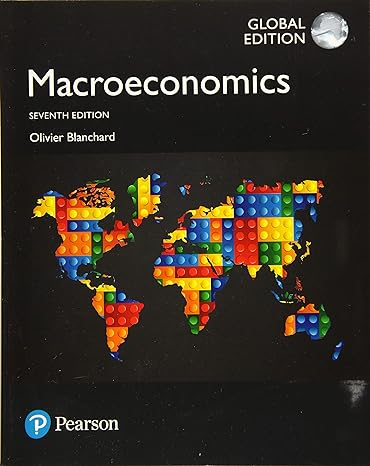Automatic stabilizers In this chapter we have assumed that the fiscal policy variables (G) and (T) are
Question:
Automatic stabilizers In this chapter we have assumed that the fiscal policy variables
\(G\) and \(T\) are independent of the level of income. In the real world, however, this is not the case. Taxes typically depend on the level of income and so tend to be higher when income is higher. In this problem, we examine how this automatic response of taxes can help reduce the impact of changes in autonomous spending on output.
Consider the following behavioral equations:
\[
\begin{aligned}
C & =c_{0}+c_{1} Y_{D} \\
T & =t_{0}+t_{1} Y \\
Y_{D} & =Y-T
\end{aligned}
\]
\(G\) and \(I\) are both constant. Assume that \(t_{1}\) is between 0 and 1.
a. Solve for equilibrium output.
b. What is the multiplier? Does the economy respond more to changes in autonomous spending when \(t_{1}\) is 0 or when \(t_{1}\) is positive? Explain.
c. Why is fiscal policy in this case called an automatic stabilizer?
Step by Step Answer:






